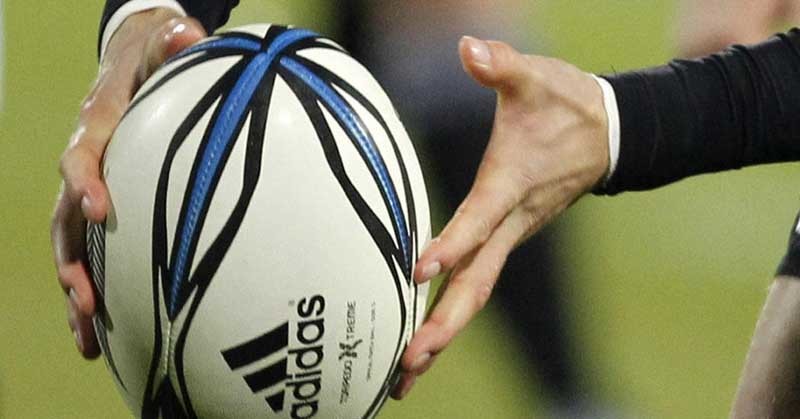An apology if any impression might have been given that Scotland in 2011 might possibly be a more resilient team, imbued with self-belief and unshakeable sense of purpose, then Saturday’s meek capitulation to Wales at Murrayfield proved that was wholly misleading.
One certainly might have believed Scotland were a new kind of squad under Andy Robinson in the past year, given the favourable results and winning performances in that time.
However, as New Zealand showed in November and Wales underlined at the weekend, scratch the surface and the old, tentative Scotland are still lurking there, compounding mistakes with more errors, being overmatched physically and panicking when the tide is going against them.
This was a Wales side suffering in a run of eight games without a win, shuffling selections, with a coach under pressure (although still loose enough to jokingly play the Queen and David Bowie track of the same name on the bus to the game).
Apart from six early minutes spent sizing the opposition up, they overwhelmed the home team in the contact areas and breakdown, scored an early try through Scotland’s perennial nemesis Shane Williams, kicked three penalties, then formed a defensive schiltron and challenged the Scots to breach it.
On occasion mainly due to the never-say-die spirit of replacement Sean Lamont that appeared possible, and one try at any time during the middle 40 minutes of the game, when Scotland owned the ball and even had a two-man advantage for five minutes, might have turned the game.
Instead, chances were butchered or blown, forced or fumbled, and all the Welsh had to do was make their tackles and hits, which they did with such force that some people were wondering whether the visitors had crossed the line.
They didn’t this was the proper intensity and ferocity of international rugby, the kind Scotland employed to beat South Africa in November, but seemed incapable of producing on Saturday.
Instead, the Scots were hammered back repeatedly and more fumbles followed by which Wales scored a second try, inevitably through Williams, and could have scored at least two more.Scrummaging weaknessThe feeling was very much like the 49-3 New Zealand game in November, when the Scots also went in with great optimism only to get a cruel dose of reality. However, that game was against a truly world-beating outfit while Wales, for all their admirable qualities, are nothing like in the same class.
What Wales proved is that the All Black game was not a mere blip, and that the old failings can come quickly to the surface when Scotland come under early pressure.
There are plenty of deficiencies to ponder, but the first to look at is the scrummage, which proved Scotland’s initial undoing and caused the perilous defensive situation which saw James Hook create Williams’ try and establish Wales’ foundation in the game.
The way the Scots lost the ball on their own put-in at the first scrum was explained away as an unlucky ricochet off a stray foot sending the ball to the Welsh side, but it was clear the visiting pack had a good shove on, and they continued to dominate in that area, either through referee George Clancy’s perception or the fact that the Welsh were putting pressure on Euan Murray.
Certainly that advantage disappeared once Moray Low replaced Murray, who will miss the next two Sunday games (the same number as he has started in first team club rugby this season) because of his religious convictions.
Considered the premier scrummager in Europe two years ago, he will be struggling to get back in the team now.
The other area where Scotland lost the game was in the back-row battle, where Welsh coach Warren Gatland accepted his team had been “given a lesson” by the Scots a year ago in Cardiff.Prodigal PatersonThis time the tables were turned, and it was not wholly down to missing Johnnie Beattie (although he and centre Graeme Morrison’s absence through injury have proved hugely influential in the first two games).
John Barclay looks to be struggling with a suspected achilles problem and his two weeks off prior to the championship do not appear to have helped.
Elsewhere the usual suspects have come out gunning for Dan Parks, but like all stand-offs he is half the player on the back foot as he is dictating on the front, and the inexperienced Ruaridh Jackson is surely a leap too far right now.
A place should be found for the rejuvenated Sean Lamont, the most dangerous looking Scot afield with a try-saving open field tackle on Jamie Roberts as well, but not at full-back.
Hugo Southwell had a nightmare 20 minutes before he was taken off injured and if he is ineffective with his left boot, there is no reason for him to be in the team.
The mass of the Scottish rugby public will no doubt believe their long-time hero Chris Paterson should return in Southwell’s place, but the way the Welsh centres manhandled the smaller Scottish backs suggests that the greater power and attacking threat of Rory Lamont would be preferable.
Ireland might have been seriously worried about their trip to Murrayfield in two weeks, but they now know, even playing modestly as they have this season, that the Scots seem as fragile as ever, and furthermore they know exactly how to break them.
A second bounceback akin to that in November against South Africa, a mere seven days after the New Zealand debacle, is going to be doubly hard to construct.
